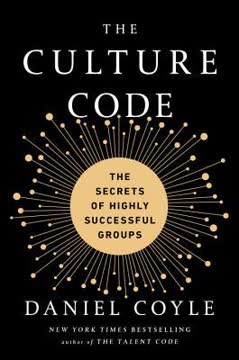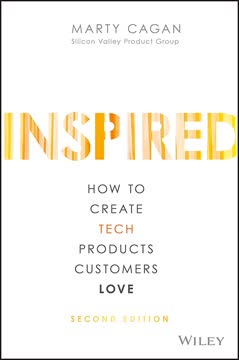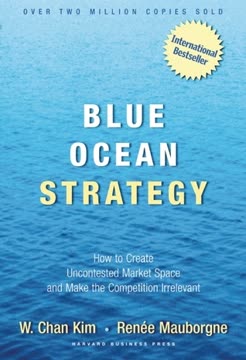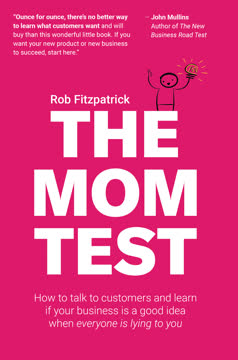つの重要なポイント
1. デジタルディスラプションは技術だけでなく人々に関するものである
組織が直面するデジタルディスラプションの真の課題(そして、実際には解決策の大部分でもある)は人々である。具体的には、人々、組織、政策が技術の進歩にどのように対応するかの速度の違いである。
適応ギャップ。 デジタルディスラプションの主要な課題は、技術の変化の速さ、個人がそれを採用する速さ、そして組織や制度が適応する遅さの間のギャップが広がっていることである。これにより、ビジネス環境に緊張と機会が生まれる。
人間中心のアプローチ。 デジタルディスラプションをうまく乗り越えるためには、組織は以下に焦点を当てる必要がある:
- 従業員が新しいスキルとマインドセットを開発するのを支援する
- 組織をよりアジャイルで応答性の高いものに再構築する
- デジタル時代に適したリーダーシップスタイルに適応する
- 技術的能力に合わせて政策とプロセスを調整する
吸収能力。 組織は以下の方法で適応能力を高めることができる:
- 人材の多様性を拡大する
- スキル開発の機会を提供する
- 外部知識を取得するメカニズムを強化する
- 内部情報の流れの速度を上げる
- 従業員が変化の「なぜ」を理解するのを助ける
2. 継続的な適応のためのデジタル成熟度マインドセットを育成する
デジタル成熟度は決して完了しない。
継続的なプロセス。 デジタル成熟度は終着点ではなく、デジタル環境で効果的に競争するために組織の人々、文化、構造、タスクを調整する継続的な旅である。
主要な特徴。 デジタルに成熟した組織は:
- 階層が少なく、リーダーシップが分散している
- より協力的でクロスファンクショナル
- 実験と学習を奨励する
- より大胆で探求的であり、リスク許容度が高い
- よりアジャイルで迅速に行動する
意図的な文化。 企業はこれらの文化的特性を積極的に開発し維持する必要がある:
- ビジョンを明確かつ一貫して伝える
- 従業員が成功するためのリソースと機会を提供する
- フィードバックと反復を奨励し、新しい働き方を学ぶ
- 新しい能力の探求と既存の能力の活用のバランスを取る
3. ビジネス目標に一致した明確で一貫したデジタル戦略を策定する
明確で一貫したデジタル戦略は、企業のデジタル成熟度の最も重要な決定要因である。
戦略的整合性。 効果的なデジタル戦略は:
- 全体のビジネス戦略と統合され、別個のイニシアチブではない
- 単に技術を実装するのではなく、ビジネス価値を創造することに焦点を当てる
- 短期的な目標と長期的なビジョン(10〜20年)のバランスを取る
- 組織全体に明確に伝えられる
反復的アプローチ。 デジタル戦略の策定は継続的なプロセスである:
- 異なる視点を持つ:技術的および組織的な能力をスキャンする
- 異なる考え方を持つ:新しい可能性に基づいて戦略的目標を特定する
- 異なる行動を取る:進捗を得るための短期的なイニシアチブ(6〜8週間)を計画する
- 繰り返す:学びに基づいて再評価し調整する
アフォーダンスの視点。 特定の機能ではなく、技術が組織に何をさせるかに焦点を当てる:
- 技術の複数の可能な使用法を考慮する(例:ダクトテープのように)
- 新しいツールを使用する際に「隠れたアフォーダンス」を発見することにオープンである
- 技術が組織全体でどのように使用されるかについての整合性を確保する
4. 組織のすべてのレベルでデジタルリーダーシップを育成する
リーダーシップという言葉は、多くの人にとって強力なイメージを生み出す。
進化するリーダーシップ。 コアリーダーシップの原則は変わらないが、その表現はデジタル環境で変わる:
- ビジョンと目的を提供することがさらに重要になる
- リーダーはデジタルトレンドと可能性を理解する必要がある
- 人々が異なる考え方をするように促すことが不可欠である
- 境界を越えて人々が協力することが重要である
分散型リーダーシップ。 デジタル成熟度には以下が必要である:
- 意思決定権を下位レベルに押し下げる
- 組織全体でリーダーシップスキルを育成する
- 従業員がイニシアチブをリードする機会を作る
バランスの取れた行動。 効果的なデジタルリーダーは以下を行う必要がある:
- コアビジネスの運営を維持しながらイノベーションを推進する
- 戦略的目標を明確に伝える
- 従業員の行動を導く「エンゲージメントのルール」を提供する
- 自身のリーダーシップスタイルをデジタル環境に適応させる
5. 継続的な学習とスキル開発の文化を創造する
この仕事の変化に対応し、新たな課題に立ち向かい、新たな機会を捉えるために、組織は適切な態度とマインドセットを持つ人材基盤を必要とする。
デジタルタレントマインドセット。 主要な特徴:
- 変化志向:適応性、柔軟性、アジャイル、革新的
- 成長マインドセット:スキルと知性を発展させる能力を信じる
- 継続的な学習:自己駆動型、経験的、探求的
スキル開発戦略:
- 従業員が主要なスキルを開発するための多様な環境を提供する
- 伝統的なトレーニングを超えて学習機会を創出する
- オープンソースコミュニティへの貢献を奨励する
- ピアツーピアの学習とスキル共有のプラットフォームを実装する
タレントの保持。 貴重な従業員を保持するために:
- 成長とスキル開発の機会を提供する
- 明確なデジタル戦略とビジョンを伝える
- 目に見える影響を持つ意味のある仕事を提供する
- 柔軟なキャリアパスと「ツアーオブデューティ」を作成する
6. クロスファンクショナルチームと分散型意思決定でアジャイルに組織する
デジタルに成熟した企業の約80%が、クロスファンクショナルチームを使用して仕事を組織し、デジタルビジネスの優先事項を実行しているのに対し、初期段階の企業では約20〜30%である。
クロスファンクショナルの利点:
- 長い承認プロセスなしで迅速な意思決定が可能
- 複数のイニシアチブを同時に追求できる
- 多様な視点がより創造的な解決策を生む
組織のモジュール性。 柔軟な構造を採用する:
- 簡単に再構成できるクロスファンクショナルチームを使用する
- 意思決定能力を階層の下位に押し下げる
- 専門スキルのためのオンデマンドタレント市場を開発する
バランスの取れた行動。 コアの安定性を維持しながらアジャイルを実現する:
- 長期的なフルタイム従業員が必要な役割を特定する
- 多様なチームを迅速に組み立て管理するプロセスを作成する
- 流動的な組織構造を調整するための新しい管理スキルを開発する
7. 意図的なコラボレーションと実験を受け入れる
コラボレーションプラットフォームはあくまでツールであり、弱い関係や有害な文化を自動的に修正するものではない。
意図的なコラボレーション。 主要な要素:
- 意見の多様性を育む
- 独立した意思決定を可能にする
- コミュニケーションを分散させる
- 個々の意見を集約するメカニズムを提供する
実験文化。 イノベーションを促進するために:
- 実験のための固定された短期的なタイムラインを設定する(例:6〜8週間のスプリント)
- 小規模で低リスクの実験から始める
- 成功や失敗だけでなく学習に焦点を当てる
- 失敗した実験も含めて結果を広く共有する
- 学びに基づいて反復する
成功のスケーリング。 デジタルに成熟した企業は:
- 成功した実験を企業全体に展開する
- 新しい能力の探求と既存の能力の活用のバランスを取る
- イノベーション努力を持続させるための資金モデルを開発する
8. コアビジネス運営とイノベーションのバランスを取る
飛行中の747の翼を交換するようなもの。
両利きの組織。 イノベーションと運営のバランスを取るための戦略:
- より自律性の高いイノベーションラボやチームを作成する
- 成長機会を自己資金で賄う資金モデルを実装する
- アジャイルな方法論を使用して新しいアイデアを迅速にテストし反復する
- 短期的なパフォーマンスと長期的なイノベーションのバランスを取る指標を開発する
文化的シフト。 以下のように移行する:
- ばらつきを排除するのではなく、意図的に制御されたばらつきを作り出す
- リスク回避からスマートなリスクテイクへ
- 長期的な計画サイクルから迅速な実験と反復へ
リーダーシップの課題。 経営者は以下を行う必要がある:
- 安定と変化の両方に対する説得力のあるビジョンを伝える
- コアビジネスとイノベーション努力の間でリソースを効果的に配分する
- 効率と実験の両方に必要な行動とマインドセットをモデル化する
9. 生涯学習とピボットを通じて未来の仕事に備える
スキルセットがある仕事やセクターで価値を失うと、人々は新しい役割や業界でそれを再利用するために「ピボット」することになる。
継続的な適応。 未来の仕事には以下が必要である:
- 技術が進化するにつれて関連性を保つための生涯学習
- 必要に応じて新しい役割や業界にピボットする能力
- 技術を補完する独自の人間のスキルの開発
キャリア戦略:
- ステップアップ:デジタル環境でより価値のあるスキルを開発する
- ステップアサイド:技術によって破壊されにくい分野に焦点を当てる
- ステップイン:新しい技術と効果的に連携する方法を学ぶ
- ステップナロー:ニッチな分野で深く専門化する
- ステップフォワード:次の波の破壊的技術の開発に取り組む
組織のサポート。 企業は以下の方法で支援できる:
- 継続的なスキル開発のためのリソースと機会を提供する
- 組織内でのピボットを可能にする柔軟なキャリアパスを作成する
- 学習と適応を重視する文化を育む
- 将来のスキルニーズを予測するための戦略的な人材計画を開発する
最終更新日:
FAQ
What's The Technology Fallacy about?
- People Over Technology: The book emphasizes that digital transformation is fundamentally about people and organizational change, not just technology.
- Digital Maturity: It introduces the concept of "digital maturity," which involves aligning people, culture, structure, and tasks to leverage technological opportunities.
- Research-Driven Insights: Grounded in four years of research, it provides insights from over 16,000 survey respondents and interviews with industry leaders.
Why should I read The Technology Fallacy?
- Practical Guidance: Offers actionable insights and strategies for leaders to effectively respond to digital disruption.
- Understanding Digital Leadership: Provides a clear understanding of digital leadership, including necessary skills and mindsets.
- Addressing Challenges: Tackles common barriers to digital transformation, such as the "knowing-doing gap."
What are the key takeaways of The Technology Fallacy?
- Digital Disruption is Inevitable: Organizations must acknowledge and prepare for digital disruption.
- People-Centric Approach: Successful transformation requires focusing on people, their skills, and organizational culture.
- Importance of Digital Maturity: Achieving digital maturity is essential for thriving in a digital world.
What is digital maturity, as defined in The Technology Fallacy?
- Alignment of Key Elements: Involves aligning people, culture, structure, and tasks to leverage technology effectively.
- Continuous Process: Digital maturity is a continuous process of adaptation and improvement.
- Framework for Success: Serves as a framework for evaluating current states and identifying areas for improvement.
What are the gaps identified in organizations regarding digital disruption?
- Knowing-Doing Gap: A significant gap exists between awareness of digital disruption and actual organizational action.
- Adaptation Challenges: Many companies struggle to implement effective strategies despite recognizing the need for change.
- Internal Barriers: Issues like complacency and inflexible culture are major barriers to effective digital transformation.
What is the role of leadership in digital transformation according to The Technology Fallacy?
- Vision and Direction: Leaders must provide a transformative vision and direction during digital transformation.
- Empowering Employees: Leaders should empower teams to think creatively and take ownership of their work.
- Continuous Learning: Fostering a culture of continuous learning and development is crucial.
How does The Technology Fallacy define experimentation?
- Learning from Failure: Experimentation is about testing ideas to learn what works and what doesn’t.
- Short-Term Sprints: Conducting short-term experiments allows for quick iteration and adaptation.
- Cultural Shift Needed: Organizations must embrace risk-taking and learning for experimentation to thrive.
What are the digital DNA traits mentioned in The Technology Fallacy?
- Key Characteristics: Includes traits like continuous innovation, real-time capabilities, and intentional collaboration.
- Assessment Tool: These traits help assess an organization's digital maturity and identify improvement areas.
- Iterative Improvement: Infusing these traits into culture through iterative changes allows for gradual improvement.
How can organizations attract and retain digital talent according to The Technology Fallacy?
- Investing in Development: Continuous development of employees' skills is crucial to keep pace with digital changes.
- Creating a Positive Culture: A supportive and engaging culture is essential for attracting and retaining talent.
- Offering Meaningful Work: Employees are more likely to stay with organizations that provide meaningful work.
What is the significance of a growth mindset in a digital workplace?
- Adaptability to Change: Encourages employees to embrace challenges and view failures as learning opportunities.
- Continuous Learning: Fosters a culture of innovation and agility within the organization.
- Collaboration and Support: Promotes collaboration and knowledge sharing among employees.
What are some practical steps organizations can take to improve their digital maturity?
- Assess Current State: Begin by assessing current digital maturity and identifying gaps.
- Foster a Learning Culture: Encourage continuous learning and experimentation within the organization.
- Align Strategy with Digital Goals: Ensure business strategy aligns with digital transformation goals.
What are some best practices for fostering a digital mindset in an organization?
- Encourage Experimentation: Create an environment where employees feel safe to experiment and learn.
- Invest in Training: Provide ongoing training and development opportunities for employees.
- Promote Collaboration: Foster a culture of collaboration across teams and functions.
レビュー
『テクノロジーの誤謬』は、デジタル変革に関する洞察と技術よりも人々を重視する点で、読者から主に好意的な評価を受けている。多くの読者は、本書の研究に基づいたアプローチ、実践的な例、および組織文化に焦点を当てた点を高く評価している。一部の読者は、内容が繰り返しであったり、特定の分野で不足していると感じた。しかし、全体として、ビジネスリーダーやデジタル成熟に関心のある人々に推奨されている。本書の主要なメッセージは共感を呼ぶ:成功するデジタル変革は、技術だけでなく、人々、リーダーシップ、適応力に依存している。
Similar Books














